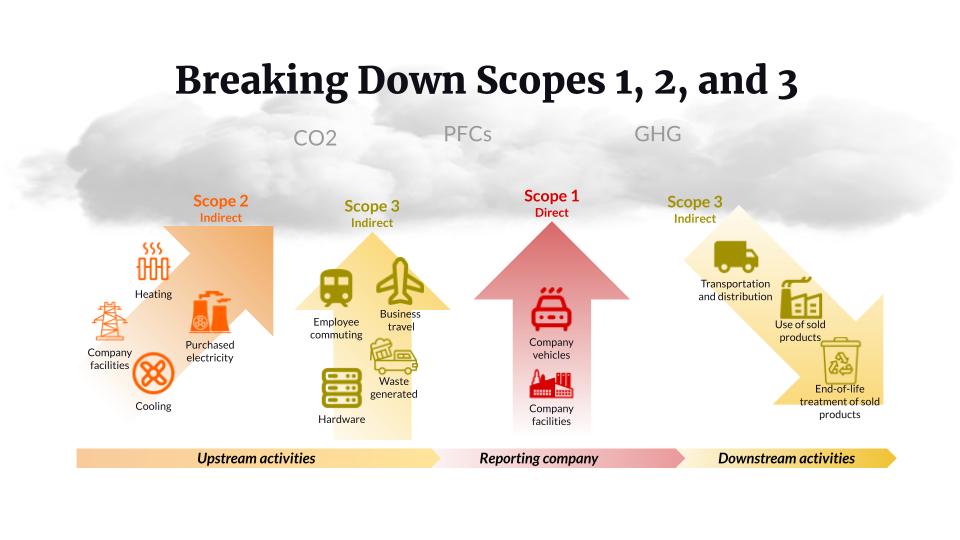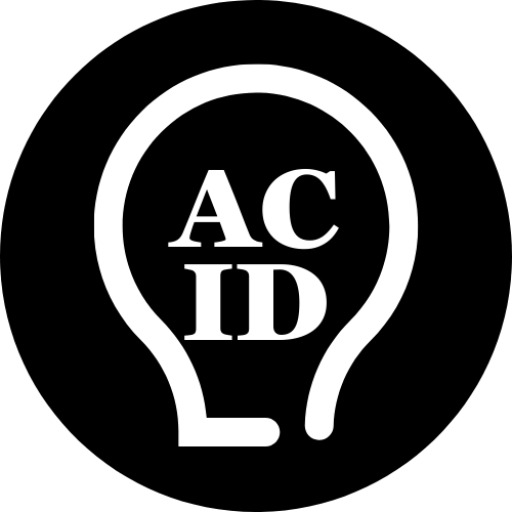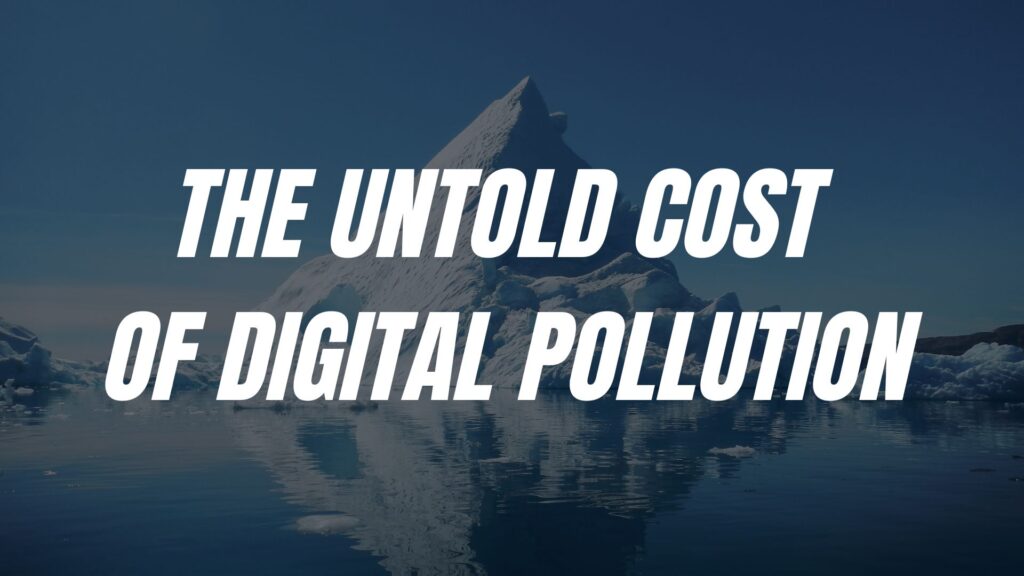As businesses worldwide face mounting pressure to reduce their carbon footprints, understanding the sources of greenhouse gas emissions is critical – especially for software vendors working with large enterprises. But where do these emissions come from, and how can software companies play a role in mitigating them? Enter the concept of Scopes 1, 2, and 3 emissions.
In this blog post, we’ll break down these emissions scopes and explore how software vendors can leverage this knowledge to drive sustainability, meet enterprise client expectations, and create value throughout the value chain.
What Are Scopes 1, 2, and 3 Emissions?
The Greenhouse Gas Protocol provides a widely recognised framework for categorising emissions into three main scopes. This helps organisations understand, measure, and ultimately reduce their environmental impact.
- Scope 1: These are direct emissions from sources owned or controlled by the company, such as company-owned vehicles and on-site heating equipment.
- Impact: Scope 1 emissions are often more easily managed since they originate from assets the company directly controls. For most businesses, reducing Scope 1 emissions means upgrading equipment, using cleaner fuels, or optimising logistics.
- Scope 2: These are indirect emissions resulting from the consumption of purchased energy, such as electricity used in offices and data centres.
- Impact: Scope 2 emissions highlight the importance of energy sources. Companies that transition to renewable electricity can significantly reduce their Scope 2 emissions. The challenge lies in managing energy consumption efficiency across operations.
- Scope 3: These emissions are the most complex to manage, as they include all other indirect emissions in a company’s value chain – upstream and downstream. This means emissions from suppliers, business travel, employee commuting, and even customer use of products.
- Impact: Scope 3 often makes up the largest part of a company’s carbon footprint. It includes emissions not directly controlled by the organisation but still related to its activities. Reducing Scope 3 emissions requires companies to work closely with suppliers, optimise product lifecycle management, and engage customers in emission reduction efforts.

The Impact of Software Use on Client Emissions (Scope 3 Focus)
Understanding Emissions Due to Software Use
From a client’s perspective, using software can contribute to Scope 3 emissions in various ways. As organisations increasingly rely on digital tools and IT infrastructure, it’s important to understand how software impacts their overall carbon footprint.
- Energy Consumption by End Users: The use of software often requires substantial energy consumption, particularly when dealing with data-heavy applications or services. For clients running software on local servers, the power needed to keep these servers operational contributes directly to their emissions. Even when using cloud-based software, the emissions are linked to the energy consumed by data centres, which form part of the client’s Scope 3 downstream emissions.
- Hardware Requirements: Running complex software often requires powerful hardware. This means more frequent hardware upgrades and higher energy use, contributing to both upstream and downstream Scope 3 emissions. Clients need to understand that the choice of software impacts the hardware lifecycle, which in turn impacts their carbon footprint.
- Cloud Services and Data Centres: When clients use cloud-based services, the emissions are tied to the energy consumption of data centres. Depending on the data centre’s energy source, these emissions can be significant. Clients should be aware that choosing a software vendor that uses data centres powered by renewable energy can reduce their own Scope 3 emissions.
- Software Efficiency: The efficiency of the software itself matters. Lightweight, well-optimised software consumes less processing power, which leads to less energy consumption. Clients should evaluate how efficiently a software solution uses resources to mitigate its environmental impact.
How Clients Can Reduce Emissions from Software Use
Choose Cloud Providers with Renewable Energy Commitments: Clients should work with software vendors that partner with cloud providers committed to renewable energy. This reduces the overall carbon footprint associated with cloud services.
Optimise Usage: Encouraging efficient usage of software – such as managing data loads and reducing unnecessary computational tasks – can help minimise energy consumption. Clients can set guidelines within their organisation to ensure software is used in a way that minimises emissions.
Evaluate Software Vendors’ Sustainability Practices: Clients should consider the sustainability practices of their software vendors. Vendors that are transparent about their emissions and are committed to reducing them are more likely to support the client’s sustainability goals.
In Conclusion
Understanding and managing Scopes 1, 2, and 3 emissions is crucial for companies aiming to reduce their overall carbon footprint. For software vendors, it’s not just about compliance but about enabling their clients to achieve sustainability goals as well. By focusing on how software impacts emissions from a client perspective, organisations can make more informed choices that lead to substantial reductions in energy use and greenhouse gas emissions.
Ready to make an impact? Start exploring opportunities to reduce emissions across your value chain and become a trusted partner for sustainability-minded clients.



